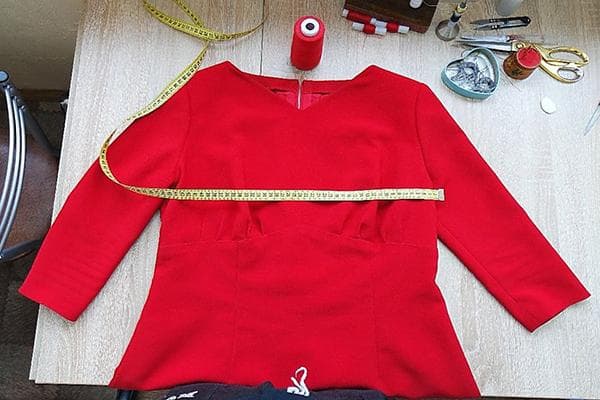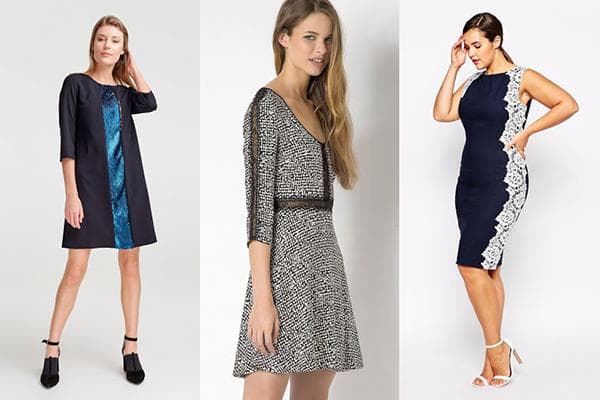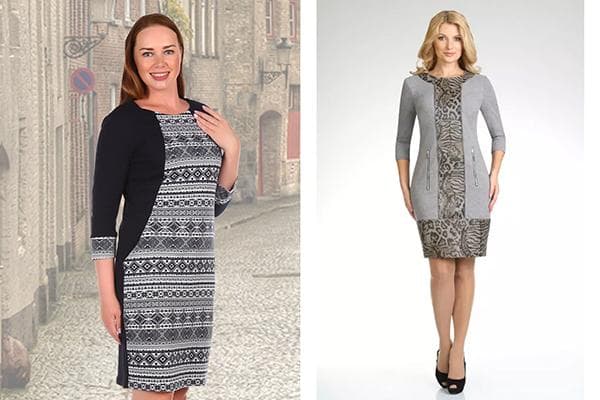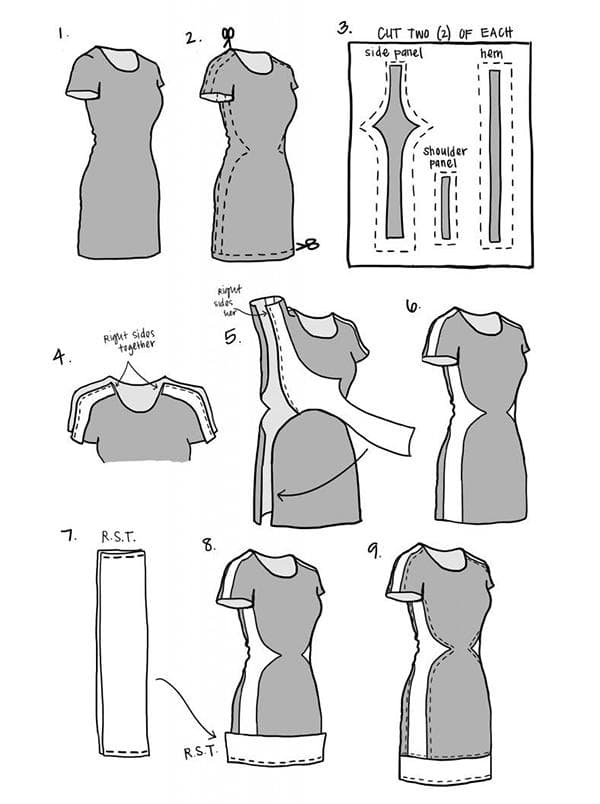How to make a dress bigger if it’s too small
Such a nuisance can happen for various reasons: the dress has shrunk after washing or the owner has “outgrown” it a little. But according to the law of the genre, it is the most beloved - it’s a pity to throw it away! It's okay, there are ways to prolong his life.
So what can you do if your dress is too small?

How to increase the size of a dress in the bust?
The first thing you need to know how to do is operate a sewing machine. After all, altering clothes, increasing the size requires an indispensable alteration.
Where to begin? With an assessment of the scale of the disaster. If the shrinkage is very minor, but the item has become tight, solving the problem will be much easier than when an increase in a couple of sizes (or even more) is required.
In the first case, the algorithm is as follows:
- rip the product along the vertical seams;
- cut out the darts on the chest, if any;
- iron;
- sew again, reducing seam allowances and dart depths;
- iron again.
This will help to enlarge the dress and make it much looser, especially if the model includes a large number of vertical seams and reliefs. Such alteration will not affect the appearance of your favorite dress in any way.
If the item needs to be altered a size or two, you will have to use your imagination.
We start with the same steps: rip and iron the seams.
Further transformations will affect the appearance, since they involve the inclusion of finishing fabrics. These will need to be used as inserts between the seams to make things wider at the chest.
- To make an insert in a product that does not have reliefs, you will have to additionally cut it along the line of vertical darts. If you have experience, then the cut can be not only straight, but also smooth and curly.
- The inserts can be in the form of stripes, triangular or oval wedges, depending on where exactly the dress is narrow (across the entire width, only in the chest, mainly in the waist or hips).
- For models with raised seams, you can go further and cut out the side parts again, entirely from the finishing fabric, but already enlarging the tight areas to the desired size. In this way, you can expand the dress on the sides with your own hands without creating the impression of being deliberate.
The cut parts need to be connected to the parts of the product, sewn, and then ironed.
If the dress is cut at the waist and has a loose-fitting skirt, and your goal is to increase it in the bust, make inserts on the bodice of an elongated teardrop shape, bringing the waistline to zero. Then you won’t have to arrange the skirt, which is now in season.
How to increase the size of a blouse?
With blouses the situation is simpler, since they do not have a “skirt” part. Therefore, the inserts on such products look more organic.
- If you need to add a little width to a sleeveless blouse, you can simply recut the side pieces, allowing a larger side seam allowance. The consumption of finishing fabric will be less than for the same option with a dress.
- You can increase the size of a blouse not only through inserts, but also, for example, by replacing the placket with a clasp with lacing. You can also make a new plank that is wider. This method will additionally require resewing the buttons, installing buttons on clothes, cutting and processing new loops. This option is only good for experienced seamstresses.
- A blouse with narrow sleeves will require a lot of effort, since you will have to arrange the sleeve itself. This can be done either through allowances or inserts, or by completely replacing them with new sleeves of the required size, cut from finishing fabric.
- The blouse can be placed along the back using decorative fabric in the form of a strip or wedge: plain or draped in the form of gathers or folds.
Don't limit yourself to just the back, leaving the entire missing width for it. This will move all the construction seams and darts of the blouse forward. It will become disproportionately wide, and its relief will no longer coincide with the relief of your figure. Insert trim evenly on both back and front.
What kind of finish can there be?
You need to select the material for the inserts so that it matches well with the main fabric according to 4 parameters:
- color scheme (in tone or in contrast);
- texture (addition or accent);
- composition (for ease of care);
- physical properties (to avoid distortions, shrinkage, etc.).
For example, thick heavy suiting fabric and stretch guipure, leather and knitwear, silk and wool will look incompatible. In processing and care, such couples “will not get along in character.”
In addition, it is important to consider that many colors and patterns visually add extra weight to the figure. Therefore, when choosing finishing materials, you should avoid:
- large floral prints;
- active large cell;
- wide horizontal stripe;
- light shades;
- brilliant textures.
By increasing your favorite item by a size or two, you can save on buying a new one, but at the same time practically get a new thing. Return the dress or blouse to service, but do not add additional clothing to the closet. This is magic without magic.



